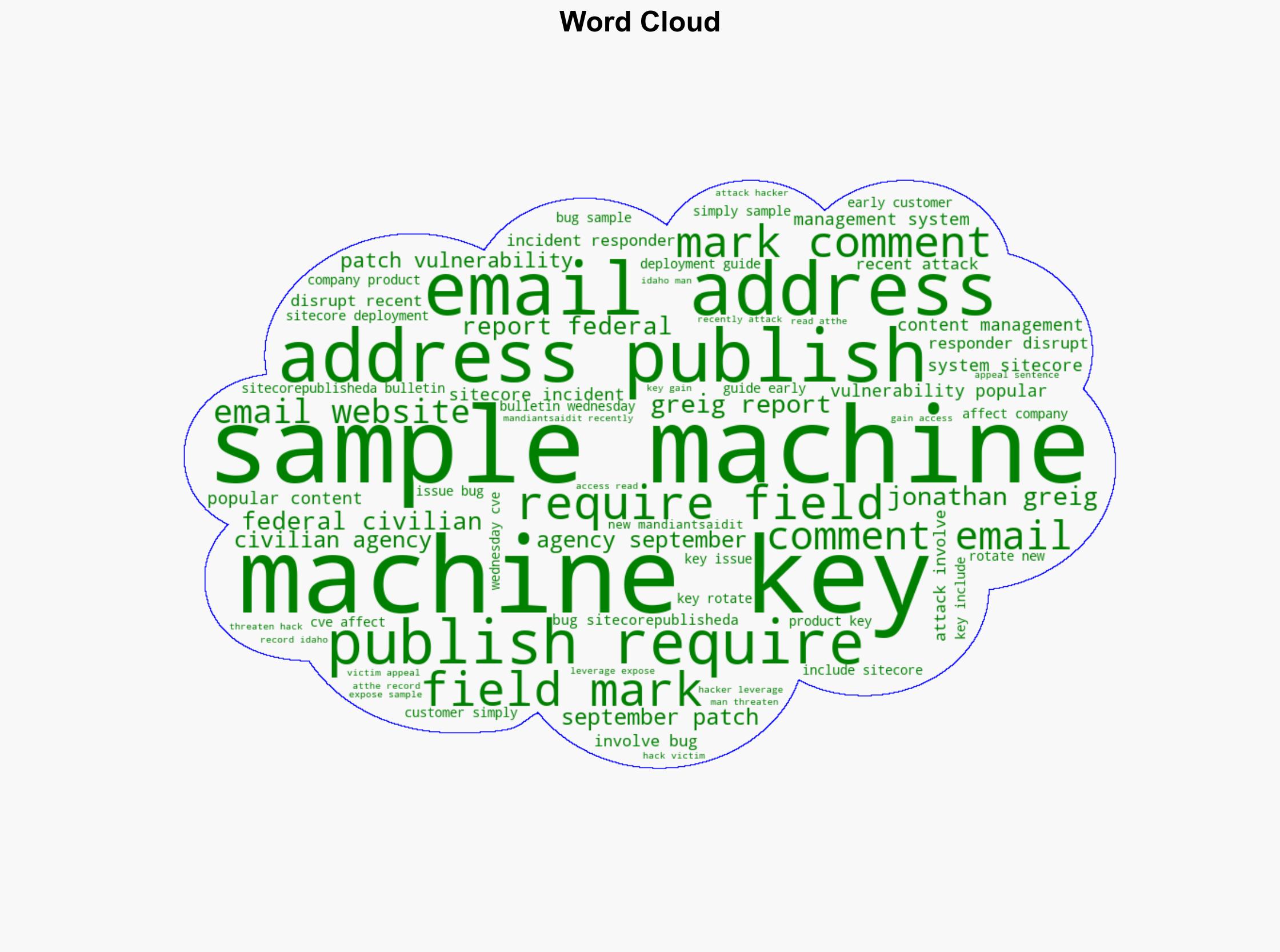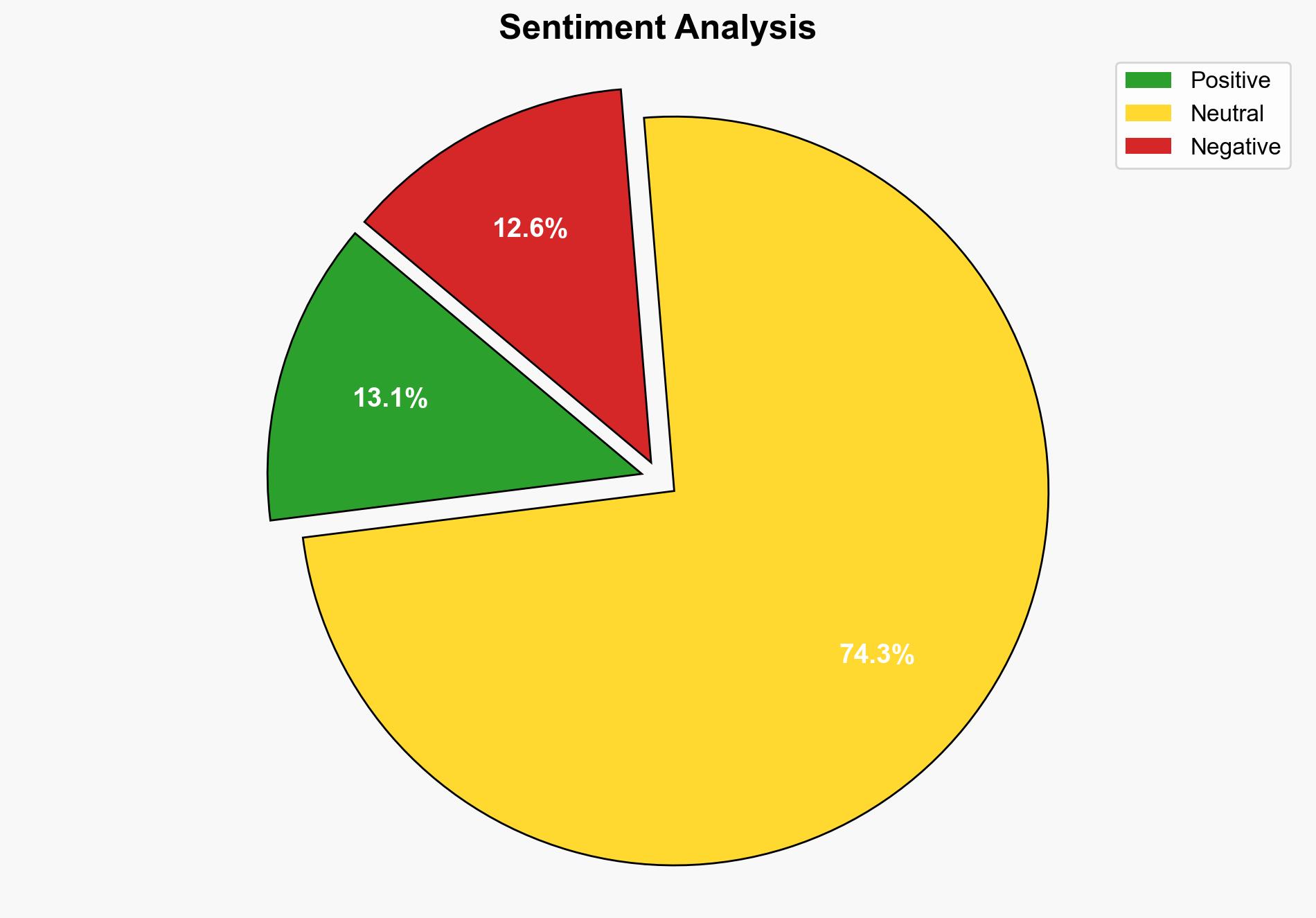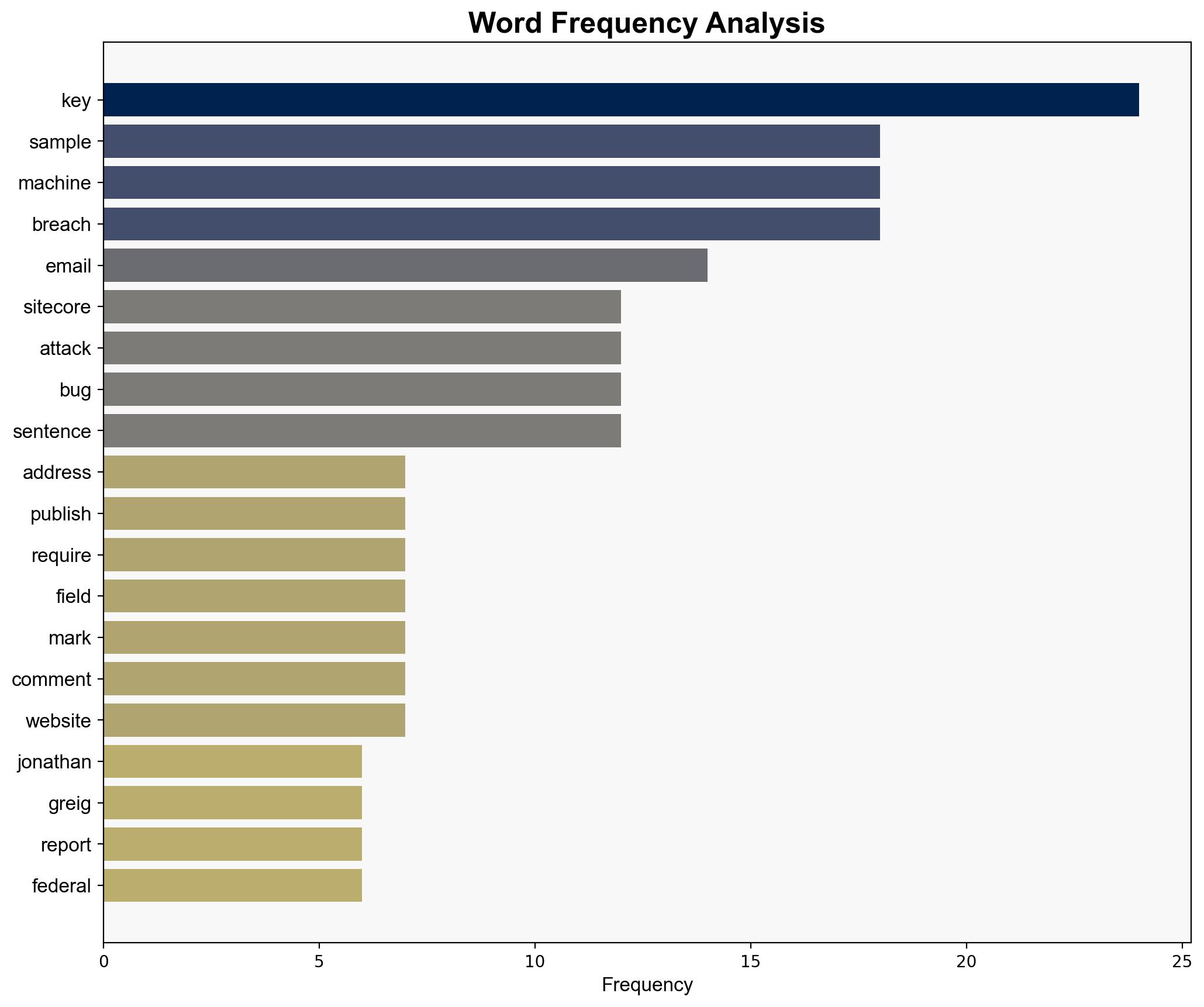CISA orders federal agencies to patch Sitecore zero-day following hacking reports – Databreaches.net
Published on: 2025-09-07
Intelligence Report: CISA orders federal agencies to patch Sitecore zero-day following hacking reports – Databreaches.net
1. BLUF (Bottom Line Up Front)
The most supported hypothesis is that the Sitecore vulnerability is being actively exploited by sophisticated threat actors, potentially state-sponsored, to gain unauthorized access to federal systems. Confidence level: High. Recommended action: Immediate patching of the vulnerability across all federal agencies and enhanced monitoring for signs of exploitation.
2. Competing Hypotheses
1. **Hypothesis A**: The Sitecore vulnerability is being exploited by state-sponsored actors to infiltrate federal systems for espionage purposes. This hypothesis is supported by the involvement of sophisticated techniques and the targeting of federal agencies.
2. **Hypothesis B**: The exploitation of the Sitecore vulnerability is primarily driven by cybercriminal groups aiming for financial gain through data theft and ransomware attacks. This hypothesis considers the broader trend of cybercriminals targeting vulnerabilities for profit.
Using the Analysis of Competing Hypotheses (ACH) 2.0, Hypothesis A is more supported due to the nature of the targets and the complexity of the attack methods reported.
3. Key Assumptions and Red Flags
– **Assumptions**: It is assumed that the vulnerability is not yet widely patched, making federal systems susceptible to exploitation. Another assumption is that the attackers have the capability to leverage such vulnerabilities for strategic gains.
– **Red Flags**: The lack of detailed attribution to specific threat actors raises questions about the true origin of the attacks. The repeated mention of state-sponsored activities without concrete evidence could indicate bias or misdirection.
4. Implications and Strategic Risks
The exploitation of the Sitecore vulnerability poses significant risks, including unauthorized access to sensitive federal data, potential disruption of government operations, and erosion of public trust in federal cybersecurity measures. If state-sponsored, this could escalate geopolitical tensions and lead to retaliatory cyber actions. Economically, the breach could result in substantial costs related to data loss and system recovery.
5. Recommendations and Outlook
- Immediate deployment of patches across all federal systems using Sitecore to mitigate the vulnerability.
- Enhance network monitoring and incident response capabilities to detect and respond to exploitation attempts swiftly.
- Conduct a comprehensive review of cybersecurity protocols and update them to address emerging threats.
- Scenario-based projections:
- Best Case: Rapid patching and monitoring prevent any significant data breaches or disruptions.
- Worst Case: Widespread exploitation leads to major data breaches and operational disruptions, necessitating extensive recovery efforts.
- Most Likely: Some exploitation occurs, but is contained through proactive measures and enhanced security protocols.
6. Key Individuals and Entities
Jonathan Greig (reporting individual), Mandiant (security firm involved in analysis), Sitecore (affected CMS platform).
7. Thematic Tags
national security threats, cybersecurity, counter-terrorism, regional focus





